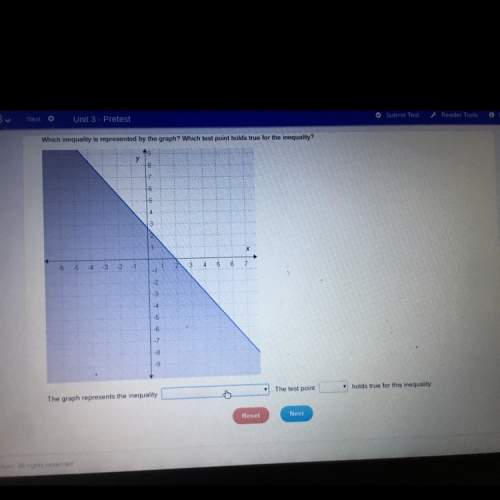
Mathematics, 05.05.2021 18:30 alysonmariefont
It is advertised that the average braking distance for a small car traveling at 75 miles per hour equals 124 feet. A transportation researcher wants to determine if the statement made in the advertisement is false. She randomly test drives 37 small cars at 75 miles per hour and records the braking distance. The sample average braking distance is computed as 112 feet. Assume that the population standard deviation is 22 feet. (You may find it useful to reference the appropriate table: z table or t table)
a. State the null and the alternative hypotheses for the test.
H0: μ = 124; HA: μ ≠ 124
H0: μ ≥ 124; HA: μ < 124
H0: μ ≤ 124; HA: μ > 124
b. Calculate the value of the test statistic and the p-value. (Negative value should be indicated by a minus sign. Round intermediate calculations to at least 4 decimal places and final answer to 2 decimal places.)
Test statistic:
c. Find the p-value.
0.01 p-value < 0.025
0.025 p-value < 0.05
0.05 p-value < 0.10
p-value 0.10
p-value < 0.01
d. Use α = 0.01 to determine if the average breaking distance differs from 124 feet.
The average breaking distance is from 124 feet.
not significantly different | significantly different

Answers: 1


Another question on Mathematics

Mathematics, 21.06.2019 20:30
Ateacher brought a pack of 17 batteries . each calculator uses 3 batteries . how many calculator can the teacher fill with batteries
Answers: 2

Mathematics, 21.06.2019 22:10
Atype of plant is introduced into an ecosystem and quickly begins to take over. a scientist counts the number of plants after mmonths and develops the equation p(m)= 19.3(1.089)^m to model the situation. most recently, the scientist counted 138 plants.assuming there are no limiting factors to the growth of the plants, about how many months have passed since the plants werefirst introduced? a)o 6.1b)0.6.6c)10 72d)o 23.1
Answers: 3

Mathematics, 21.06.2019 22:30
Amachine that produces a special type of transistor (a component of computers) has a 2% defective rate. the production is considered a random process where each transistor is independent of the others. (a) what is the probability that the 10th transistor produced is the first with a defect? (b) what is the probability that the machine produces no defective transistors in a batch of 100? (c) on average, how many transistors would you expect to be produced before the first with a defect? what is the standard deviation? (d) another machine that also produces transistors has a 5% defective rate where each transistor is produced independent of the others. on average how many transistors would you expect to be produced with this machine before the first with a defect? what is the standard deviation? (e) based on your answers to parts (c) and (d), how does increasing the probability of an event a↵ect the mean and standard deviation of the wait time until success?
Answers: 3

Mathematics, 21.06.2019 23:00
If i purchase a product for $79.99 and two accessories for 9.99 and 7.00 how much will i owe after taxes applies 8.75%
Answers: 2
You know the right answer?
It is advertised that the average braking distance for a small car traveling at 75 miles per hour eq...
Questions


Mathematics, 03.12.2019 06:31

English, 03.12.2019 06:31

Mathematics, 03.12.2019 06:31


Biology, 03.12.2019 06:31



Physics, 03.12.2019 06:31

Mathematics, 03.12.2019 06:31


English, 03.12.2019 06:31

History, 03.12.2019 06:31




Mathematics, 03.12.2019 06:31



Social Studies, 03.12.2019 06:31




